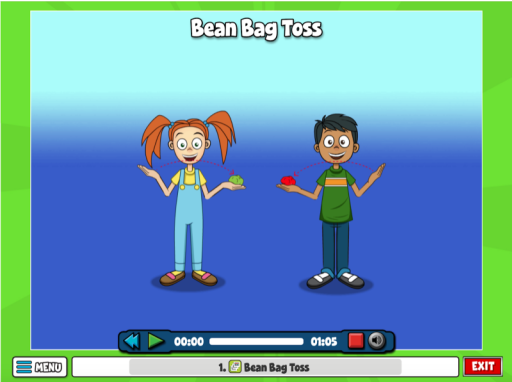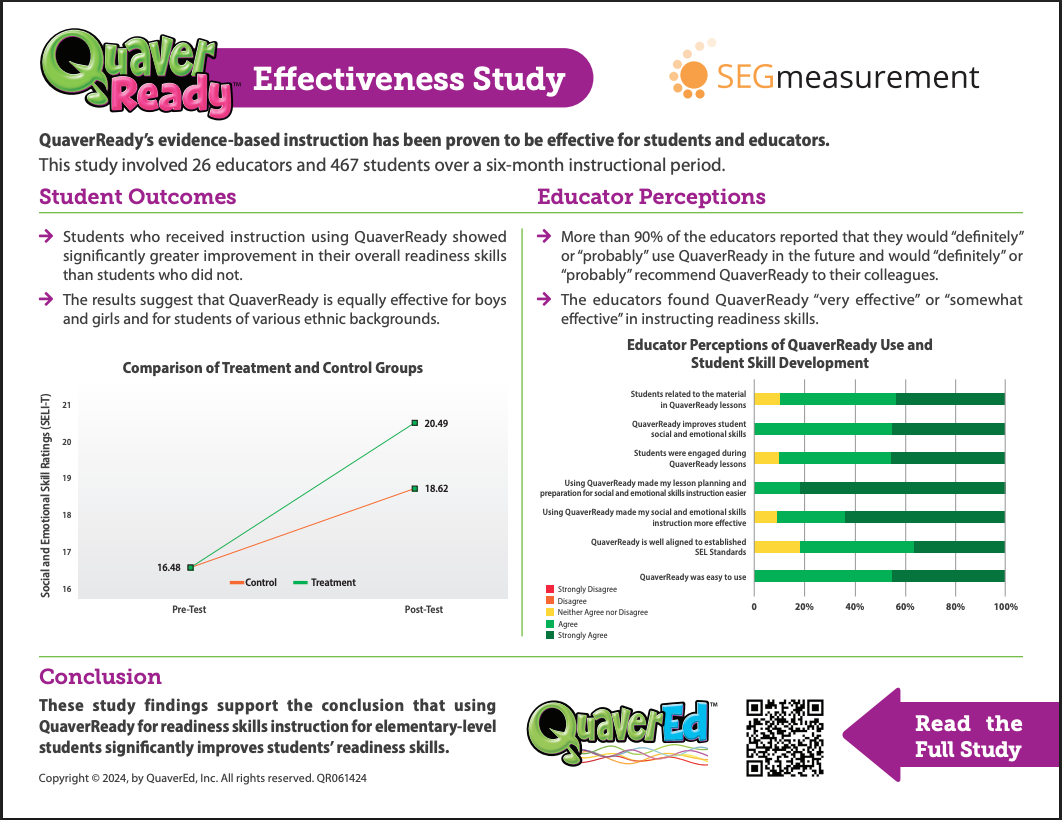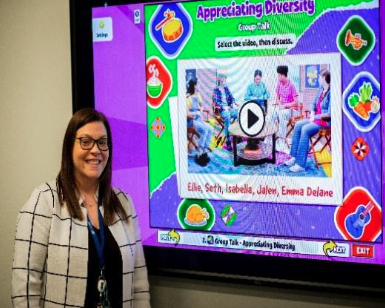***
From an early age, children begin to learn how to use their voice by observing and mimicking the world around them. Between the ages, five to ten, a child’s vocabulary skills rapidly increase from 5,000 words to over 10,000 words. During their formative years, children mostly learn these words through experiences and observation. As they grow their vocabulary, they start to learn how to categorize the words and develop an understanding of the big ideas around each one of the terms, finding how they form together into sentences. While they continue to expand their vocabulary and concept understanding, music plays a big part in helping children develop their language skills.
As students are introduced to and experience different parts of music, they are asked to practice musical skills that directly translate into early language development skills. Through the practice of steady beat and rhythm exploration, students show a stronger internal cadence which assists them with word syllabication, verbal communication, and reading skills. In the Quaver Music program, hundreds of simple songs practice steady beat skills.
Students use simple movement exercises such as marching or moving to the beat, or shaking an auxiliary percussion instrument to focus on fine motor skills and strengthening their internal cadence. Adding in simple sounds while exploring rhythm increases verbal communication and tracking. Many simple rhythm exploration exercises such as bean bag tossing, scarf dancing, and body percussion help students track during the activity and create movement connections with words to practice phrasing. Students also begin to work on verbal communication, especially with team activities such as bean bag tossing to communicate with one another as they are playing together.
Found in the Quaver Music program, the activity Bean Bag Toss focuses on beginning rhythm sounds while incorporating basic tempo movements individually and then in partners. This activity alone works on internal cadence, beginning verbal communication with single sounds, and tracking.

When listening to and learning songs, the process of experiencing the music, slow lyric repetition, and then performance can play a big part in a child’s working memory. Through the process of learning a song, children strengthen their reading skills and start to recognize new words simply by observation and repetition.
“Studies have shown that music produces several positive effects on a human’s body and brain. Music activates both the left and right brain at the same time, and the activation of both hemispheres can maximize learning and improve memory” (Team, 2019).
When they begin to understand the songs, taking the words, they experience and chanting or singing them along with the music heavily influences working and long-term memory recall and helps expand their vocabulary. In every ClassPlay song, students are met with animations to help word recall, highlighted lyrics to assist with tracking, and the ability just to play the vocal track to help children with pronunciation and comprehension.
By experiencing and participating in music lessons, children strengthen their inner cadence to express themselves better vocally and drive up working and long-term memory recall through learning songs while expanding their vocabulary through the process. Experiencing music at a young age dramatically influences a child’s early language acquisition.
***
For close to a decade, Catherine Dwinal has been a music educator, clinician, and well-known specialist in the field of elementary music technology. As an author and blogger, she has helped thousands of music teachers worldwide with digital instructional strategies in the music classroom. Her mission continues to be assisting educators in integrating digital teaching resources and practices into their instruction to make learning music seriously fun.
***
References
- Pitt, J., & Welch, G. F. (2020, May). Communicating through musical play: combining speech and language therapy practices with those of early childhood music education – the SALTMusic approach. Music Education Research, 22(1), 68-86. doi: 10.1080/14613808.2019.1703927 https://bit.ly/3pXVkhY
- Dudek-Brannan, D. (2020, February 22). Vocabulary development in the School-age Years. https://bit.ly/3w4JS4Z
- Paterson, J. (2016, February 01). How music helps language acquisition (opinion). https://www.edweek.org/teaching-learning/opinion-how-music-helps-language-acquisition/2016/02
- Team, M. (2019, August 13). Does Music Help You Study: Science Says There Are Many Benefits. (2021). https://www.fnu.edu/benefits-studying-music/
- Diversity, equity, and inclusion. (2021, March 03). https://www.quavered.com/diversity-equity-and-inclusion/


